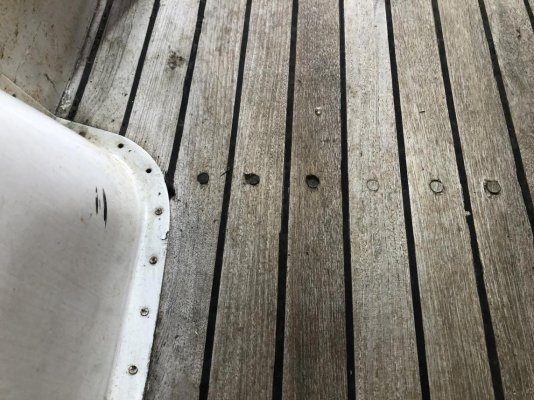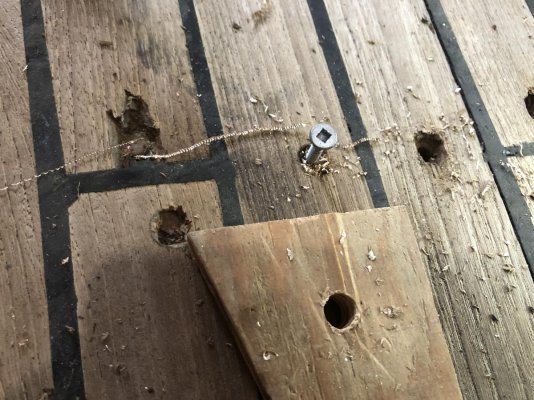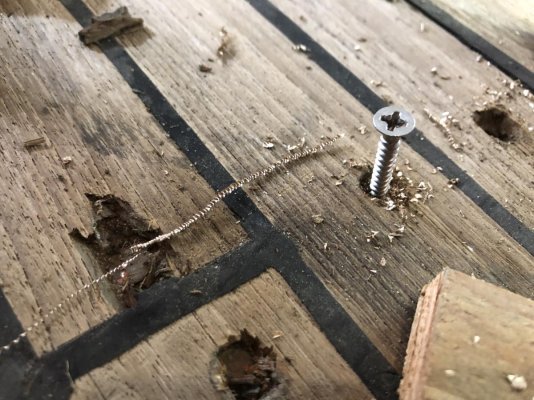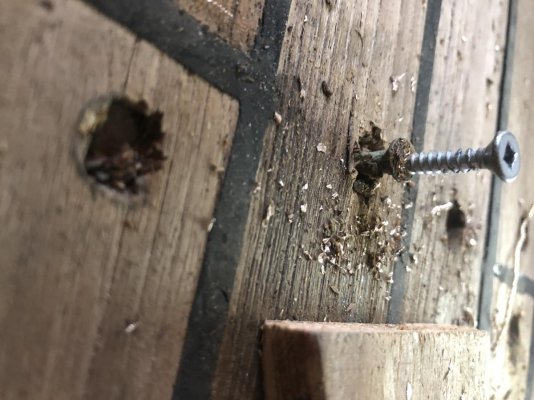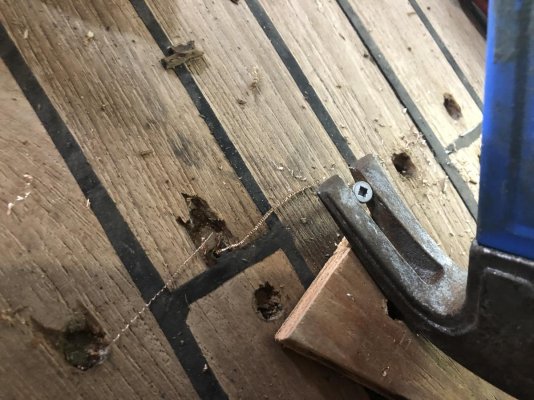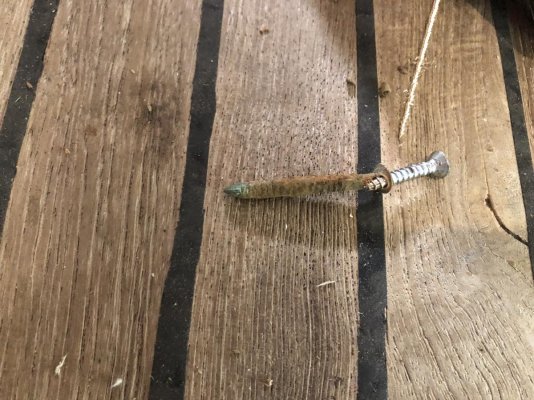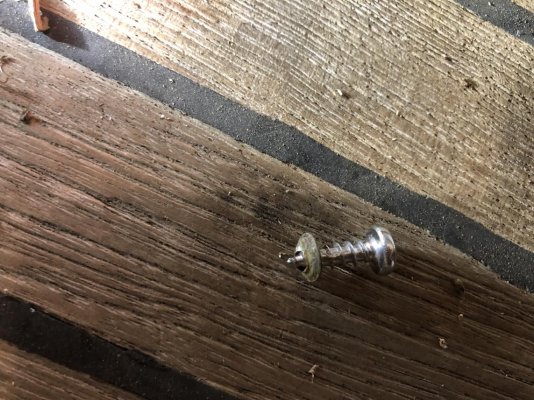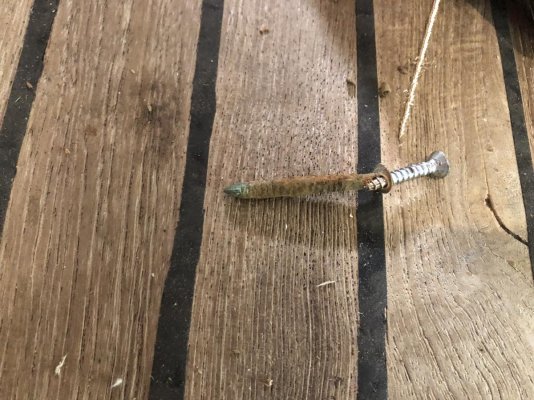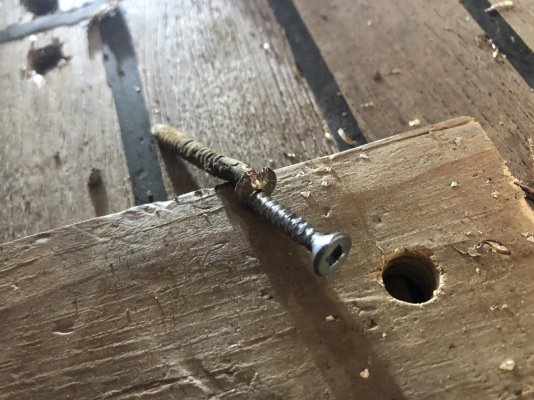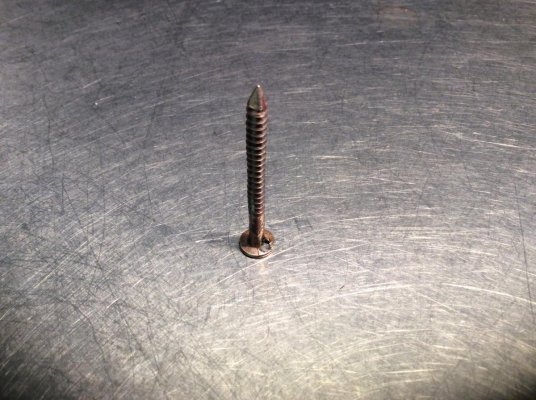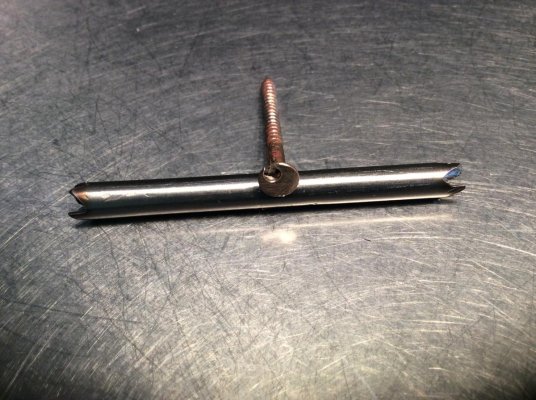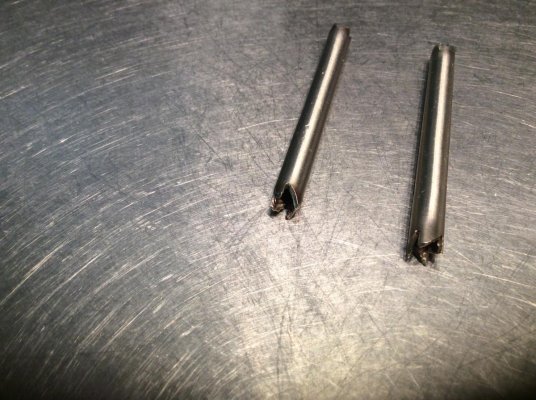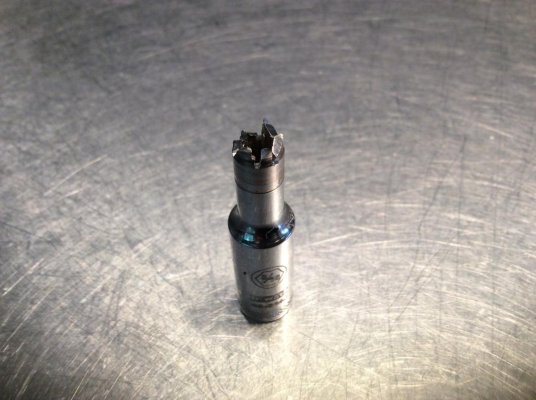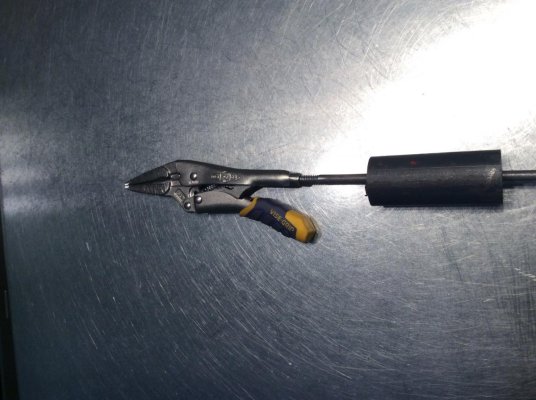Oil Gypsy
Veteran Member
- Joined
- Sep 25, 2019
- Messages
- 53
- Location
- Canada
- Vessel Name
- Dauntless
- Vessel Make
- Grand Banks 36 Classic #248
So our 50 year old teak deck is looking really sad, plenty of exposed nail heads and with uneven and missing caulk. Its definitely leaking but luckily its boathouse kept so water intrusion is kept to a minimum.
In the short term I was going to cover the deck with duck canvas and then paint it, the old fashioned approach. While removing the windlass switch buttons I had had a really good look at the teak planks, there appears to be over 1/2" remaining, closed to 5/8", much more than I expected. This made me think again. The deck is nailed down with bronze ring nails, it seems as though someone has removed and epoxied in new teak plugs at sometime in the past but they are now less than an 1/8" thick now. There seems to be enough teak left to try to save it.
Ive experimented at removing the teak nails by drilling holes in the head, screwing in stainless steel screws and then removing the nails with a hammer. Its slow work, on average each nail takes 10 to 15 minutes. The bronze eats drill bits, they rapidly become blunt. On about 10% of the nails the head pops off leaving the nail shank in place, these I try to pull with needle nose pliers. I've made a tool to fit over the shank of the nail to drill down the outside, trying to make pulling it out easier, it works most of the time but there are a few nails I will have to find another way of removing the shank which appears to have been bent during installation.
My plan is to fill each nail hole with penetrating epoxy to seal off any rot, countersink the holes deeper and then use a larger screw to re-attach the deck, finishing with new teak plugs.
The job is going to take months if I continue in this fashion so I'm wondering if anyone else has found a quicker way to remove the bronze nails.
In the short term I was going to cover the deck with duck canvas and then paint it, the old fashioned approach. While removing the windlass switch buttons I had had a really good look at the teak planks, there appears to be over 1/2" remaining, closed to 5/8", much more than I expected. This made me think again. The deck is nailed down with bronze ring nails, it seems as though someone has removed and epoxied in new teak plugs at sometime in the past but they are now less than an 1/8" thick now. There seems to be enough teak left to try to save it.
Ive experimented at removing the teak nails by drilling holes in the head, screwing in stainless steel screws and then removing the nails with a hammer. Its slow work, on average each nail takes 10 to 15 minutes. The bronze eats drill bits, they rapidly become blunt. On about 10% of the nails the head pops off leaving the nail shank in place, these I try to pull with needle nose pliers. I've made a tool to fit over the shank of the nail to drill down the outside, trying to make pulling it out easier, it works most of the time but there are a few nails I will have to find another way of removing the shank which appears to have been bent during installation.
My plan is to fill each nail hole with penetrating epoxy to seal off any rot, countersink the holes deeper and then use a larger screw to re-attach the deck, finishing with new teak plugs.
The job is going to take months if I continue in this fashion so I'm wondering if anyone else has found a quicker way to remove the bronze nails.

